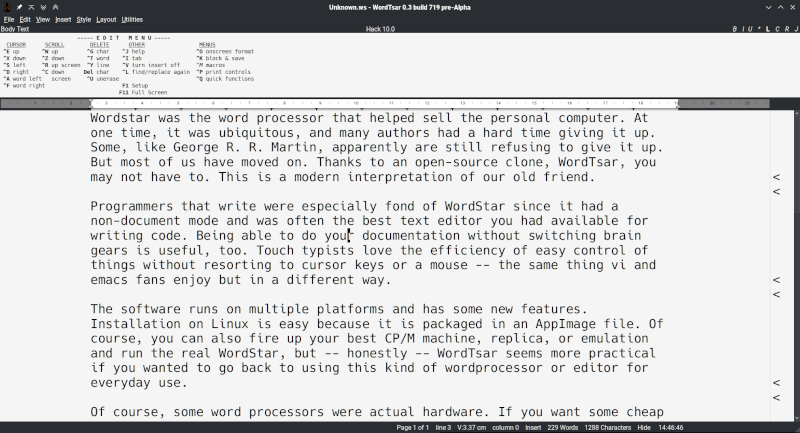Last week, at a Fox News town hall (where else?), former President Donald Trump called China’s despot, Xi Jinping, a “brilliant” guy who “runs 1.4 billion people with an iron fist.” Lest anyone doubt his admiration, Trump added that Xi is “smart, brilliant, everything perfect. There’s nobody in Hollywood like this guy.”
Trump is not alone. Many in the United States and around the globe see the allure of a dictator who gets things done and makes the trains run on time, no matter the rules or laws that stand in the way. According to repeated polling, roughly one in four Americans agrees with the statement that a “strong leader who doesn’t have to bother with Congress and elections” is desirable. A much higher proportion of citizens agrees with that sentiment elsewhere, including in some of the most populous democracies: 55 percent of Indians, 52 percent of Indonesians, 38 percent of Nigerians, and 31 percent of Japanese.
This grass-is-greener view of authoritarian rule tends to emerge most often where governments are failing to meet popular expectations. When democracy delivers, dictatorship doesn’t seem like a rosy alternative. Only 6 percent of Germans and 9 percent of Swedes are seduced by strongmen.
[Brian Klaas: Democracy has a customer-service problem]
Admiration for autocracy is built on a pernicious lie that I call the “myth of benevolent dictatorship.” The myth is built on three flimsy pillars: first, that dictators produce stronger economic growth than their democratic counterparts; second, that dictators, unswayed by volatile public opinion, are strategic long-term thinkers; and third, that dictators bring stability, whereas divided democracies produce chaos.
Two decades ago, the United States and its Western allies became embroiled in Iraq and later blundered into the financial crisis, leading think tanks to begin praising the “Beijing Consensus,” or the “China Model,” as an alternative to liberal democracy. Critiques of democracy surged in popularity in the era of Trump and Brexit. In the United States, intellectual publications ran articles arguing that the problem was too much democracy. In 2018, The Times of London published a column titled “Our Timid Leaders Can Learn From Strongmen.” China’s state media, capitalizing on the West’s democratic woes, argued that democracy is a “scary” system that produces self-inflicted wounds.
But events and new research in the past several years have taken a wrecking ball to the long-standing myth of benevolent dictatorship. All three pillars of the lie are crumbling. Every fresh data point proves Winston Churchill right: “Democracy is the worst form of Government, except for all those other forms that have been tried from time to time.”
Let’s start with the myth that dictatorships produce stronger growth. This falsehood arose from a few well-known, cherry-picked examples, in which despots oversaw astonishing transformations of their national economy. Starting in the late 1950s, Lee Kuan Yew helped transform Singapore from a poor, opium-filled backwater into a wealthy economic powerhouse. And in China, per capita GDP rose from nearly $318 in 1990 to more than $12,500 today. Those successes are eye-popping.
But a systematic evaluation of the overall data reveals another reality. Even with these outliers of strong growth, most rigorous studies have found limited or no evidence that authoritarian regimes produce better economic growth than democratic ones. Some researchers, such as the political economists Darren Acemoglu and James Robinson, have found compelling evidence that the inclusive political institutions of democracy are one of the strongest factors in producing stable, long-term growth.
When authoritarian regimes do succeed economically, they often do so at a cost, because even booming dictatorships are prone to catastrophic busts. As the political scientist Jacob Nyrup has written: “China has within a 50-year time frame both experienced a famine, where 20-45 million people died, and an economic boom, where hundreds of millions of people were lifted out of poverty.” The rosiest interpretation of the authoritarian economic data, then, is that autocrats may sometimes preside over marginally higher growth, but with a much greater risk of economic collapse. That’s not a wise trade-off.
However, the myth of strongmen as economic gurus has an even bigger problem. Dictators turn out to have manipulated their economic data for decades. For a long time, they’ve fooled us. But now we have proof: The reason their numbers sometimes seem too good to be true is that they are.
Every government has motivation to fudge its economic data. But democracies have institutions that provide oversight and block politicians from that impulse, ensuring accurate figures. No such checks exist in dictatorships.
That difference led Luis Martinez, an economist at the University of Chicago, to test whether despots were overstating their growth rate. He did so with an ingenious method. Previous studies have verified the presence of a strong, accurate correlation between the amount of nighttime light captured by satellites and overall economic activity. When economies grow, they emit more nighttime light (which is why you can clearly pick out cities on a nighttime satellite image, and why the density of light is so much lower in Africa than, say, in Europe or on the American East Coast). High-resolution images allow researchers to track changes in nighttime illumination over time, and the detailed, granular data these images produce are nearly impossible to manipulate. Martinez discovered an astonishing disparity suggesting that dictators have been overstating their GDP growth by about 35 percent.
And the more the numbers are checked, the more manipulation is exposed. In Rwanda, where The New York Times has named President Paul Kagame “the global elite’s favorite strongman” because of his apparently brilliant record of economic growth, the government claimed that it had decreased poverty by 6 percent from 2010 to 2014. Researchers found that the inverse was true: Poverty had actually surged by 5 to 7 percent. Fittingly, the notion that Benito Mussolini made the trains run on time was a lie; he built ornate stations and invested in train lines used by elites, but the commuting masses got left behind.
[Read: The undoing of China’s economic miracle]
Even China, the apparent authoritarian economic miracle, is showing signs of slowing down, its growth model no longer so well matched to the global economy. Such cracks in growth are an innate feature of autocracy. Because dictatorships criminalize dissent, normal mechanisms of economic feedback are broken, and the system doesn’t self-correct when blundering into economic mistakes. Beijing’s quixotic quest to maintain perpetual “zero COVID” was a case in point. Autocrats are adept at building ports and roads and mines. But thriving modern economies are sustained less by open mines than by open minds, of which dictatorships, by design, have a limited supply.
Advocates for the myth of benevolent dictatorship conveniently ignore a crucial fact, which is that much of the growth in autocracies comes either from manufacturing products that were invented in the more open societies of the democratic West, or from exporting goods to rich democracies. (The top destinations for Chinese exports are the United States, Japan, and South Korea.) In that way, even the outliers of autocratic growth depend for their success on the innovation and consumer wealth of democracies. Would China have lifted millions out of poverty through export-led growth quite so fast if democratic America hadn’t become an economic powerhouse first?
The myth’s second pillar turns out to be no less rickety than the first. It holds that dictators are more strategic long-term thinkers than democrats because they’re not beholden to fickle public opinion. But this lie is believable only if you don’t understand how most dictatorships actually work.
Over more than a decade, I’ve studied and interviewed despots and the henchmen who surround them. One conclusion I’ve drawn is that making decisions based on bad information is an intrinsic feature of the systems dictators run. The longer despots cling to power, the more likely they are to fall into what I call “the dictator trap,” in which they crush dissent, purge anyone who challenges them, and construct their own reality through propaganda, all to maintain control. Speaking truth to power in such a system can literally be deadly. As a result, dictators are told only what they want to hear, not what is true, and they begin to believe their own lies. Vladimir Putin’s catastrophic war in Ukraine is a tragic illustration of the dictator trap: Putin got high on his own supply, and innocent Ukrainians are the victims of his power trip.
Despots often use their power not for long-term planning, but for short-term self-glorification, as no end of examples can attest. Turkmenistan’s former dictator Saparmurat Niyazov blew millions to build, in his own honor, a golden statue that would rotate to always face the sun. In another stroke of genius, he closed all rural hospitals so that the sick could have the privilege of being treated in his pristine marble capital of Ashgabat. Most of the population lived outside the city, and countless thousands likely died because they couldn’t reach a hospital in time. His successor erected an enormous golden statue of his favorite breed of dog. Thankfully, democracies have checks and balances to suppress such narcissistic whims.
The most persistent pillar of the myth, however, is the one that holds that dictators produce stability. Some dictators have hung on to power for decades. Before his death, Muammar Qaddafi ruled Libya for 42 years. Paul Biya of Cameroon, an 89-year-old despot who had no idea where he was during a recent event, took office during the Vietnam War. Putin has been in power for more than two decades; Xi has ruled for only one so far, but he appears prepared to retain his position indefinitely.
To stay in power, authoritarian leaders face constant trade-offs. If they strengthen military or paramilitary leaders, they face the risk of a coup d’état. But if they weaken their men under arms, then they can’t protect themselves from external invasion. To keep their elites happy, despots need to make them rich through corruption—usually at the expense of the population. But a ruling class awash in ill-gotten gains could inspire a revolution, or a wild card: assassination. Autocrats appear stable, but they’re not. They’re constantly vulnerable, forced to make every decision based on what will stave off threats to survive in power.
The stability that does exist in autocracies is, ironically, derived partially from the trappings of democracy. Recent research has made clear that dictators have developed mechanisms to “mimic democracy to prolong autocracy.” Most authoritarian leaders now hold elections, but rig them. Some use parliaments or courts to enact unpopular decisions while avoiding blame.
[From the December 2021 issue: The bad guys are winning]
Eventually, though, dictatorships tend to fall apart. And when they collapse, they really collapse. Elections in democracies change governments, not regimes. Personalist dictatorships, by contrast, often implode. When Qaddafi was killed, Libya disintegrated. He had deliberately designed the political system to function only with him at its center. The same could be true of Putin’s Russia. When he is toppled or dies, the country won’t have a smooth, peaceful transition.
The often-disastrous demise of autocrats creates a negative feedback loop. Nearly seven in 10 leaders of personalist dictatorships end up jailed, exiled, or killed once they lose power. While in power, many despots are aware of this grim fact, and so they use violence to stay in power, often growing more extreme as they lurch toward their downfall. The effect can hardly be called “stability,” even if the same person occupies the palace for decades.
For anyone who still clings to the illusion that dictatorships are likely to be prosperous, strategically wise, or internally stable, I propose a simple test. Imagine that someone wrote down the names of all the countries in the world on little slips of paper and then separated them into two hats: one for democracy, one for dictatorships. You would select one of the two hats, draw a slip of paper from it, look at the name, and then spend the rest of your life living in that country. Who knows, maybe you’d get lucky and end up in an authoritarian regime that seems stable and is producing steady growth. But I know which hat I would choose. And even if you fantasize about finding the unicorn that is a benevolent strongman, I suspect you do too.





